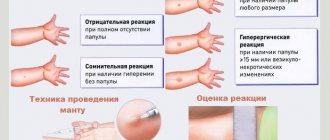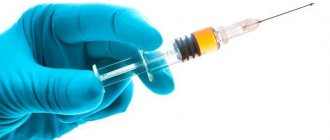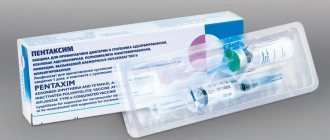ARVI, which includes influenza, are the most common infections. More than 30 million cases of infection are registered in Russia every year. Moreover, the incidence of ARVI varies from year to year. But even in non-epidemic years, the recorded incidence of influenza infections and colds is many times higher than the incidence of other infectious diseases. The highest number of infections is usually observed between September and April, with the peak incidence occurring in February and March. In summer, colds and flu do not disappear anywhere, they just occur about 3-5 times less often than in winter.
- Mechanism of action of antiviral drugs
- In what cases is it used for ARVI?
- The situation in global practice
- Discovery and methods of obtaining interferon
- Selection of antiviral agents
- Use for prevention
The particularly important position of ARVI among other viral diseases is determined by the lack of a radical solution to the problem of their prevention using any one universal method. Scientists have invented a vaccine, but it is used only against influenza infections and is powerless against colds. When making vaccines, it is also impossible to take into account possible mutations of viruses.
Acute respiratory viral infections (ARVI) are diseases that are caused by certain viruses. This disease causes damage to various parts of the respiratory tract and general intoxication.i Viruses are non-cellular life forms that can reproduce only inside the cells of highly developed creatures. Based on their composition, viruses are divided into two large groups - simple (for example, polio viruses, hepatitis A) and complex (measles, herpes, influenza viruses). In total, experts know more than 300 types of viruses that cause ARVI. Quite often, bacteria join viruses, which causes the development of various complications.
The intensity, frequency of occurrence and dominance of various respiratory viruses depend on the time of year and climate. In some cases, acute respiratory viral infections may have a combined etiology, when several pathogens are involved in the development of an infectious disease.
When viewed under a microscope, the influenza virus looks like a chestnut fruit that is encased in a spiked shell. And these so-called “spikes” consist of proteins on which the virus’s mutability directly depends. This characteristic distinguishes it from other known viruses. And even the most minor changes in the structure of these “spikes” lead to the emergence of new strains that have not yet been studied by humans. Such unpredictability makes influenza infection one of the most dangerous for the human population. In the Russian Federation, the annual economic loss from ARVI is estimated at about 40 billion rubles.ii
The difficulty lies in the similarity of the clinical picture of many ARVI viruses. For example, a differential diagnosis needs to be made between influenza and other acute respiratory infections, including the COVID-19 virus that led to the 2020 pandemic.iii
Antiviral drugs for influenza: main mechanisms of action
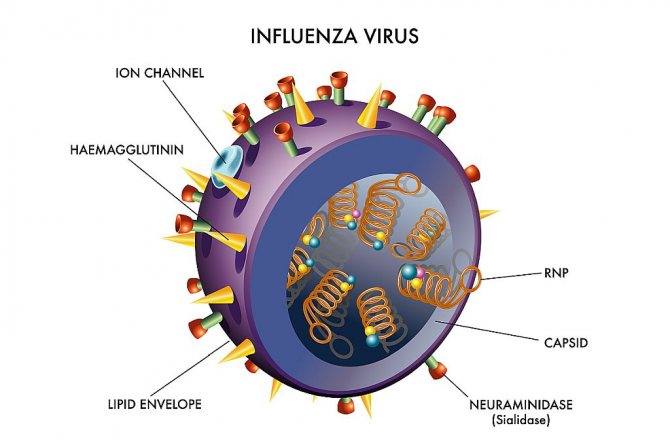
By introducing themselves into the cells of the respiratory tract, viruses cause damage to structures that perform barrier functions. Antiviral for flu and colds blocks some stages of viral infection:
- At the stage of infection and penetration into the cell, the drug blocks viral activity. The medicine can slow down or prevent the process of bringing viral particles closer to the cell membrane.
- At the second stage, if the virus does become close to the cell, the viral genome is copied. By using anti-viral drugs, the replication of viral DNA and RNA is blocked.
- During the synthesis of viral proteins and at all stages of virus assembly, various drugs are used: interferon-based, protease inhibitors and structural protein inhibitors.
- When the virus comes out and tries to invade other cells, it can be defeated with drugs based on neuraminidase inhibitors and antibodies.
The incubation period of the influenza virus in the body is on average three days. In order to choose the right treatment and antiviral for influenza and ARVI with minimal side effects, it is important not to confuse these diseases.iv
| Clinical manifestations | ARVI | Flu |
| Onset of the disease | Discomfort increases gradually | Acute and sudden, a person can sometimes name the exact time when he felt that he had become infected |
| Fever | The thermometer readings rarely reach 38 0C | Within a few hours, the readings on the thermometer can reach 39 0C, 40 0C and higher. Fever bothers you for several days |
| Manifestations of intoxication | Intoxication is mild, the patient feels relatively well | There are chills, a severe headache, “shooting” in the temples and forehead, eyes hurt from bright light, aching muscles and joints |
| Nasal discharge | Almost always found | There is no severe runny nose, but I am worried about slight congestion, which appears after a few days. |
| Sore throat, hyperemia | Common with colds | Identified as the disease progresses, the doctor notices redness of the pharynx |
| Cough | With a cold, a cough is bothersome from the first days of infection; the patient has difficulty clearing his throat | There is a cough, the patient feels pain in the chest, which appears due to damage to the trachea |
| Sneezing | Occurs frequently | Rarely observed |
| Red eye syndrome | Observed when bacteria attach | Diagnosed frequently |
| Painful state of fatigue, lethargy | After the illness it is almost not expressed | After the end of the period of illness, the patient experiences irritability, insomnia, and weakness during the day for several weeks. I often have a headache. |
When should you use an antiviral drug for influenza and acute respiratory viral infections, and do doctors recommend this?
Many people, under the influence of certain media, are sure that there is no point in taking medications for ARVI. After all, as the old proverb says, a cold goes away in a week without treatment, and in seven days with treatment. This means that this disease can be survived without medication. However, unfortunately, statistics speak of disappointing facts. According to the World Health Organization, up to 650 thousand people die annually from respiratory diseases associated with seasonal influenza infection.v Not everyone knows that influenza infection and colds can negatively affect the heart. This reduces the average life expectancy by several years.vi After a severe course of ARVI, serious damage to the respiratory system, including pneumonia, is often diagnosed. Also, after acute respiratory viral infections, diseases of the blood vessels and the central nervous system are often detected.

Therefore, the main argument in favor of taking anti-viral medications is the need to reduce the high risks that accompany influenza infection. The second reason is due to the fact that timely and adequate treatment shortens the duration of the disease and weakens its symptoms. If you take a good flu antiviral when you develop symptoms of influenza infection and colds, you may experience a shorter period of runny nose, headaches, and fever.
Antiviral drugs for influenza in global practice
According to the most conservative estimates, today the number of potential consumers of anti-virus drugs is hundreds of millions of people per year. At the same time, people have always tried to fight ARVI viruses, including in ancient times, when there were no diagnostic laboratories, humanity had not yet invented the microscope and did not know that the cause of their diseases were harmful viruses. However, as the ancient Roman physician and philosopher Claudius Galen said, the people were thirsty for medicine. And I received them. In ancient times, analogues of modern drugs - remedies in the form of tinctures and lotions - were widely and not always effectively used to treat viral diseases. The first effective antiviral drugs for colds and flu appeared only when scientists identified viruses and began serious work in the field of pharmacy.
Today, antiviral drugs are substances that have antiviral activity. Frequently used drugs for the treatment and prevention of acute respiratory viral infections and influenza include:
- Drugs of narrowly targeted action (act only on influenza);
- Broad-spectrum drugs (for example, interferon acts against more than 300 types of various acute respiratory viral infections and influenza);
- Symptomatic remedies (relieve symptoms of the disease, including fever, runny nose, aching joints, but do not act on the cause of the disease).
Flu protection
One of the most common infectious diseases today are influenza and other acute respiratory viral infections. Every year, during the off-season, hundreds of viruses that can cause colds are activated. They are very quickly transmitted from person to person through airborne droplets or household contact. Often the rapid spread of infection takes on the character of an epidemic. That is why doctors around the world are concerned about the development of preventive measures to avoid infection and mitigate the negative consequences of ARVI. The main danger is that against the background of these diseases, complications such as pneumonia, sinusitis, sinusitis, otitis, heart disease, etc. may occur. Prevention of influenza and other acute respiratory viral infections includes a whole range of measures, which includes vaccination, taking antiviral and immunomodulating drugs and much more.
Vaccination
Timely vaccination can prevent influenza infection. However, there are no vaccinations to prevent acute respiratory viral infections caused by other respiratory viruses. Vaccination is carried out at the beginning of the epidemic season from September to November. It helps develop immunity against one or more strains of the influenza virus. This allows you to avoid infection or alleviate the course of the disease and reduce the risk of complications. This procedure is an important step in the prevention of influenza. Immunization is carried out annually using vaccines that are selected based on WHO recommendations. This is especially important for those who are most likely to experience severe and complicated disease. The risk group includes:
- - children;
- - pregnant women;
- - aged people;
- — patients with chronic diseases, etc.
Vaccinations should also be given to service sector employees, medical workers, teachers, kindergarten teachers, transport employees - that is, everyone who has to constantly come into contact with a large number of people. However, it is important to understand that vaccination does not provide 100% protection against influenza. The fact is that immunity is developed against certain subtypes (strains) with which the body/person has already been in contact. In addition, viruses are prone to constant mutations.
Taking antiviral drugs
During an epidemic, in direct contact with patients with influenza and other acute respiratory viral infections, it is recommended to take antiviral drugs, which include ARBIDOL®. This drug is prescribed not only for treatment, but also as part of the seasonal prevention of acute respiratory viral infections and influenza according to a special scheme taking into account age characteristics (see instructions). ARBIDOL® has pronounced activity against influenza viruses type A and B, other viruses that cause acute respiratory viral infections, as well as rotavirus infection. During periods of increased morbidity, the drug can help increase the body's resistance to infection. Post-exposure prophylaxis of influenza and other acute respiratory viral infections using an antiviral drug is primarily recommended:
- - persons from risk groups in the first two weeks after vaccination;
- — persons with immunodeficiency as a supplement to vaccination;
- - older people who may not get the desired effect from vaccination;
- — persons for whom immunization is contraindicated;
- — persons who did not get vaccinated and at the same time had contact with sick people;
- — in the event of a pandemic threat;
- - if the vaccine strain does not coincide with the epidemic one
But even if it is not possible to avoid infection, the immune system is ready to meet the virus. This allows you to shorten the duration of the disease and reduce the risk of complications. Taking ARBIDOL® in the first 48 hours of infection promotes faster relief of the condition and restoration of performance.
General recommendations
Methods of nonspecific cold prevention are aimed at strengthening the immune system and protecting against infection. To increase the body's defenses it is recommended:
- - regularly carry out hardening, having previously agreed on the procedures with the doctor - pour cool water over the body,
- - take a contrast shower, air and sun baths;
- - adhere to a healthy lifestyle - eat right,
- - walk in the fresh air more often, relax, get enough sleep, and, if possible, play sports;
- — take vitamin and mineral complexes during seasonal hypovitaminosis.
To prevent infection, you must also follow the following rules:
- — ventilate the room every 2–4 hours;
- - regularly carry out wet cleaning;
- — if possible, avoid crowded places;
- - dress appropriately for the weather and prevent hypothermia;
- — wear a mask while walking during epidemics and when caring for the sick;
- — change the mask in a timely manner (use of this protective equipment should not exceed 6 hours);
- — wash your hands more often with warm water and soap (especially after coming from outside and before eating);
- - do not use other people’s personal hygiene items (towels, clothes, etc.).
Conscious behavior of patients also plays a very important role in the prevention of colds. To avoid infecting others, you need to wear a medical mask, avoid crowded places and, if possible, treat yourself at home. Prevention of ARVI requires strict adherence to all recommendations. Only a specialist can prescribe medications.
History of the discovery of interferon and methods of its production
Interferon is a number of proteins with similar properties that are secreted by cells in response to the invasion of an infectious agent. Scientists first announced the discovery of interferon in the mid-20th century. Prior to this, through research it was discovered that when infected with one virus, the body cannot be infected with other viruses. It was found that infected cells are capable of producing a special protein, which became a kind of shield and antiviral protection. This phenomenon was called interference, and the protein was called interferon. Over time, this great discovery has gone far beyond the scope of virology and is now used in many areas of medicine and pharmacology.
In the USSR, the widespread use of IFN began in the late 1960s. To produce the drugs, leukocytes from placental blood were used, which were taken from postpartum women. In those years, human leukocyte IFN was successfully used during epidemics of influenza infection, which made it possible to reduce the incidence and reduce the symptoms of viral infection. Unfortunately, there are risks associated with the production of human leukocyte IFN. A drug obtained using donated blood is very difficult to perfectly purify, including from blood-transmitted diseases - hepatitis and HIV. Also, such drugs are quite expensive. Therefore, today donated blood is used very rarely for the production of medicines and only in cases where the expected benefits from their use outweigh the possible risks.
The development of genetic engineering and the development of recombinant IFN technology has made it possible to use drugs en masse, since their cost has noticeably decreased, and the absence of blood components in the composition has made it possible to level out the risks of contracting various infections. It is safe to say that with the invention of recombinant IFN, a new era in the use of interferons began. In particular, recombinant interferon alpha-2b is part of the antiviral drug VIFERON.
IFN has not only activity against viruses, but also antibacterial, antiproliferative (including antitumor), immunomodulatory and radioprotective activity.
Every year, researchers write a lot of articles and monographs about the positive effects of IFN on the body, which contain fundamental data on the structure, mechanisms of action and biological effect of interferons, and also provide proven results of the long-term use of IFN in medicine.
The use of Grippferon has nothing to do with vaccination. If necessary, it can and should be instilled, both before and immediately after, and weeks and months after vaccination. The fact is that Grippferon and vaccines affect different parts of the immune system. The principle of the vaccine is based on the fact that a small dose of a virus is introduced into the body, to which antibodies are produced. This is the so-called “specific immunity”. However, a sufficient amount of antibodies necessary to protect the body is not produced immediately. In addition, these antibodies act only against one virus, its causative agent. In addition, the vaccine promotes the production of antibodies to only three varieties of the influenza virus; in total, more than 2000 (!) varieties of influenza are known in nature. Typically, during an epidemic, several different viruses spread at once. And often a person who, it would seem, has just been ill, again finds himself in bed with a fever and runny nose, because he has received a new virus, to which the old antibodies have no effect at all.
Interferons help the body survive - an important part of the immune system, the so-called “nonspecific immunity”. These proteins are formed in response to a virus infecting a cell. They inhibit the development of the viral process and help cells survive until the arrival of the main “army of defense” - antibodies. It does not matter which virus attacks the body.
If for some reason a person does not produce interferons, then the virus becomes fatal for him: the virus multiplies too quickly and antibodies do not have time to be produced in sufficient quantities. On the contrary, if a person produces a lot of interferons, then the infection, although present in the body, may go completely unnoticed. At the same time, the production of interferons is reduced under the influence of factors such as overwork, stress, lack of sleep, nervous experiences, chronic heart, liver and lung diseases. In addition, fewer interferons are produced in children under 2 years of age, as well as in people over 60 years of age. If we take into account all these factors, we can conclude that the majority of metropolitan residents produce insufficient amounts of interferon to properly resist viruses, and therefore interferon must be administered from the outside. Today, fortunately, this is very easy to do. It is enough to drip Grippferon into the nose, which already contains ready-made interferons. Moreover, the sooner such help arrives for the body, the better. After all, during infection, new viruses are born every minute, ready to attack still healthy cells.
Grippferon can also be used for prevention when there is reason to believe that viruses already present in it enter the body or are activated. For example, in contact with a sick person, in case of hypothermia. Please note that vaccination is not suitable for such emergency prevention.
Good antiviral drugs for influenza: how to choose
A special group should include medications that help the body resist the invasion of foreign agents. Many anti-virus drugs have a complex effect. In modern medicine, drugs containing nucleoside derivatives, adamantane, deoxyuridine, synthetic amino acids, pyrophosphate analogues, substances of plant origin and many other drugs are widely used.
The attending physician should prescribe treatment and select antiviral drugs, taking into account the age and condition of the patient.
Possible consequences
Every year, specific prevention of influenza is carried out using inactivated vaccines: Fluarix, Begrivak. If the drug does not match the circulating strains of the influenza virus, patients take immunomodulatory drugs.
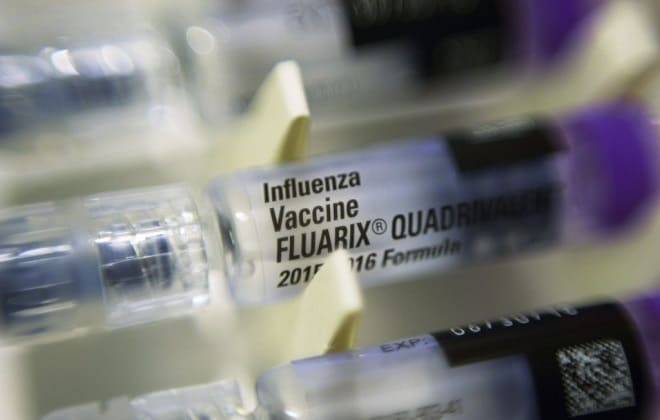
Anaferon, prescribed for treatment of a patient after vaccination, distorts the body's response to the administration of the medication.
If you take an antiviral drug, the body's immune response will increase, the increased load will be perceived as stress, which is especially dangerous for older people and young patients.
Taking Anaferon for prophylactic purposes can be resumed a week after vaccination. Antivirals taken after a flu shot can cause complications.
The patient experiences symptoms such as:
What do you think are the most important factors when choosing a medical facility?
- low-grade fever;
- neurological manifestations.
Immunomodulators are used with caution in the post-vaccination period, since uncontrolled use develops pathological conditions such as:
- allergy;
- arthritis;
- glomerulonephritis.
Some drugs activate immune cells, causing the production of antibodies. Before prescribing them, the patient must cure persistent sources of infection.
Antiviral drug VIFERON
One of the drugs that helps strengthen the immune system and has a wide spectrum of activity against viruses is the drug VIFERON. Recombinant interferon alpha-2b, which is part of this drug, interferes with the synthesis of viral DNA and RNA, thereby blocking the replication of the virus. The drug also helps restore the immune system.
The drug, which is available in the form of suppositories, gel and ointment, was developed as a result of fundamental research in the field of immunology, which has proven that the presence of antioxidants (vitamins C, E) enhances the effect of interferon. The list of advantages of drugs containing interferon includes their high non-selective antiviral activity. This means that such drugs are able to fight a wide range of acute respiratory viral infections. The use of the drug VIFERON as part of complex antiviral therapy makes it possible to reduce therapeutic doses of antibiotics and hormonal drugs, as well as reduce the toxic effects of this therapy.
The drug in the form of suppositories can be used during pregnancy (from the 14th week), as well as during breastfeeding and when treating children.
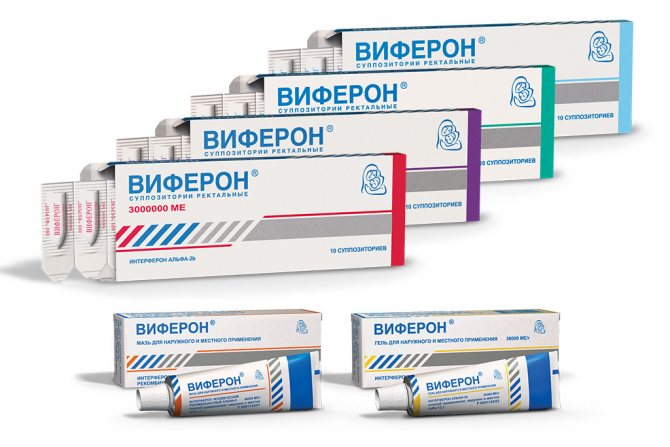
VIFERON Gel is also used for the treatment of ARVI. For the treatment of ARVI, including influenza, including those complicated by a bacterial infection, the application of VIFERON gel must be repeated 3-5 times a day for 5 days. VIFERON Ointment can also be used to treat respiratory diseases.

